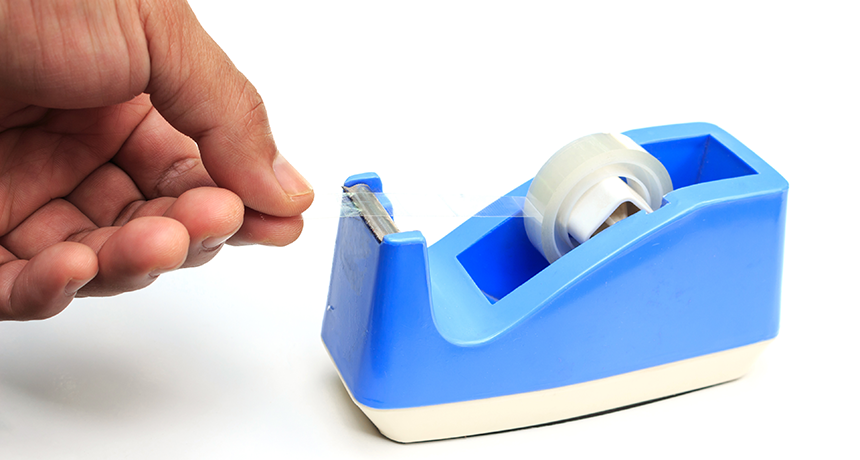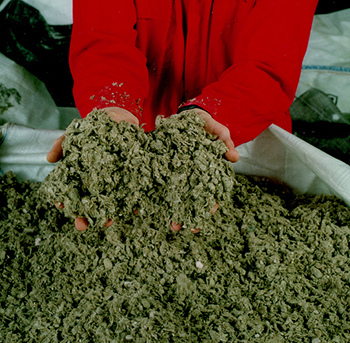Adhesive from trees could make tape more eco-friendly
Researchers used plant wastes, instead of petroleum, to make the glue for tape

Tape is convenient but not environmentally friendly. A new adhesive for tape comes from trees instead of crude oil.
angintaravichian/iStockphoto
When you have to wrap a gift or mend the ripped page of a book, you probably reach for a piece of tape. The sticky stuff is everywhere. But tape has a downside. Its adhesive — the substance that makes it stick — is made from a fossil fuel. Now a team of scientists has come up with a greener solution. They’ve made a new glue from chemicals found in trees.
They described their innovation online May 15 in the journal ACS Central Science.
Sticky tape has been around for more than 80 years. It relies on a special kind of glue. As you push down on a piece of tape, the adhesive on the sticky side seals tightly. But you can easily peel it back off. Some adhesives even come off without leaving anything behind.
Tape adhesives are polymers. These are long molecules made from chains of repeating chemical building blocks. To make polymers, researchers can use ingredients from many different sources. One common source is crude oil. Companies today use the hydrocarbons that make up this oil for their tape adhesives.
But crude oil is a fossil fuel. It takes millions of years to develop. So once people extract fossil fuels from the Earth, they can’t be quickly replaced. Processing them also emits pollution, including greenhouse gases.
A team of researchers at the University of Delaware, in Newark, thought they could find a greener option — one friendlier to the environment. “We wanted to make polymers from natural, renewable resources,” says Shu Wang. She is a materials scientist who now works at Bridgestone Americas in Nashville, Tenn.
Lignin is a natural polymer. It makes woody plants strong and stable. And viewed up close, lignin’s chemical structure resembles that of oil’s hydrocarbons. So Wang and her colleagues wondered whether they could substitute plants for oil as a starting ingredient. And their new data confirm that they can.
Turning trees into tape
Wang’s team started with poplar trees. They soaked its wood in chemicals to break the lignin’s long, chain-like molecules into smaller bits. They collected these small pieces. Then they made some minor chemical tweaks. This gave their polymer the chemical traits that they wanted. Finally, the team linked these altered fragments to build new polymers. They designed these chains to mimic the oil-based types used for today’s tape adhesives.

They coated a thin, tape-like piece of plastic with the new glue. Then they conducted “peel tests.” They measured the force needed to peel off the tape after it had been pressed down flat. The researchers compared this test tape to types that you can buy today in the store.
And their new tape performed well. “The force needed to pull up tape with our adhesive on it was similar to the force needed to pull up Scotch tape, or Fisherbrand labeling tape,” Wang says. (Keep in mind, you don’t want tape to peel up too easily. If it does, those ripped book pages won’t stay mended.)
If this new adhesive were someday used for store-bought tapes, it could help the environment in more than one way. Lignin is a waste from making paper and ethanol from trees. So this glue wouldn’t just replace adhesives made from crude oil. It also would prevent lignin from going in the trash.
Thomas Epps III is a chemical engineer and materials scientist at the University of Delaware. He led the team that invented the new glue. “We have taken a renewable material that is normally thrown away,” he notes, “and turned it into something useful.”
Zhuohua Sun agrees. A chemist at the University of Groningen in the Netherlands, he did not take part in the new research. “They’ve made something useful from a renewable and widely available material,” he says.
Epps hopes that he and his colleagues can use different plants to make even more adhesives. “Could we use corn or switchgrass as an alternative to trees?” he asks. “If this is possible, it would certainly expand the types of glues we can create.”
This is one in a series presenting news on technology and innovation, made possible with generous support from the Lemelson Foundation.







